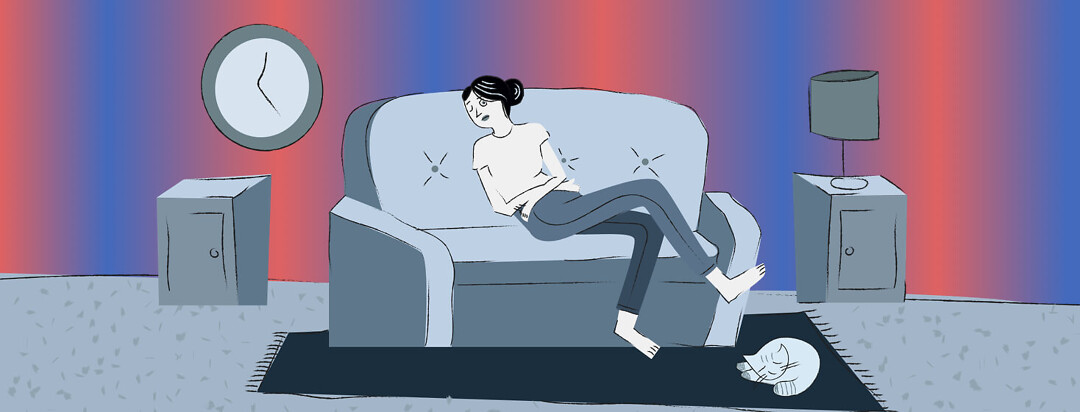Painsomnia: My Journey
Folks, in light of recent discussions, I want to offer up my own version of painsomnia, that pesky portmanteau that describes a special kind of sleeplessness that only pain can cause. Taken separately, pain and insomnia each present their unique challenges, and that is how I will begin describing this phenomenon. Let’s tackle insomnia first.
A look at my own bedtime routine
On a typical evening, you will find me in my recliner starting to drowse around 10:30PM. Do I get up and go to bed? Nah. I fight to go to bed like an eight-year-old wanting to stay up late to watch television. I fall asleep and wake up every hour.
Somewhere between midnight and 3AM, groggy and heavy-limbed, I struggle out of the chair and tumble into bed. I always think I will immediately fall back into a deep slumber. Alas, no. I stare ceilingward in the dark, eyes wide open. I close them, hoping that will make me drowsy. It doesn’t. If my mind is crowded with thoughts, I clear them and relax all my muscles.
I am still conscious. Then I decide the room is too stuffy so I aim the pedestal fan at my face and put it on a higher setting. My body temperature drops, I pull up the comforter and doze. I wake up drenched in sweat and throw off the comforter, cooling down enough to drift off, only to wake up drenched in sweat again.
This goes on until I find a happy medium by using a top sheet and thin blanket only, with the comforter at the foot of the bed. This scenario plays out differently each night, depending on the season. The cold air that is fan-blasted at my face at just the right speed is ideal, and I do find that sweet spot most nights.
The many factors of painsomnia
Except for the inexplicable, open-eyed sleeplessness that precedes it, I see this as a classic case of how MS screws with my thermo-regulator, see-sawing between chilled and overheated. Estrogen loss might play a part, too, and I have stopped taking hormone replacement therapy for hot flashes. But there are other factors that contribute to insomnia besides temperature and pain.
My allergies have worsened this summer. One Zyrtec before bed doesn’t quite cut it some nights. I might wake up with swollen nasal passages that refuse to clear. If I can’t breathe, I can’t sleep. I may wake with a sneezing attack and my nose will drain and drain. Popping an extra Zyrtec will quiet it down.
Other potential upsets include the soft palate collapsing in the back of my throat and cutting off my exhalation, waking me up. Another symptom is dysphagia. In my case, dysphagia prevents me from being able to voluntarily swallow.
Sometimes simply clearing my throat fixes it, other times raising my head or sitting up will help, but not every time. I don’t know why it happens some nights, then disappears for a long while. Whether it’s dysphagia, allergies, sleep apnea, or temperature swings, grabbing eight hours of sleep is an ongoing challenge.
Did I imagine that pain?
By contrast, neuropathic pain is more easily managed. I take 300mg gabapentin in the morning and again in the evening. That totally quiets the painful electrical shocks and blow-torch burning in my legs that can wake me from a deep sleep. I also have other kinds of discomfort that I will call transient pain.
For example, I might fall asleep totally relaxed and pain-free only to wake in the middle of the night with my entire torso in the grip of aching, gnawing pain, front to back, ribs to the pubic bone, cervical to sacral spine, and everything in between.
Or I might wake to leg stiffness, or cramping from hamstring to toe, despite having taken a hefty dose of baclofen before bedtime and feeling loose and pain-free soon after. Then there is the itching on whatever shoulder is making contact with the bed. Whatever the discomfort, I will fall asleep eventually and wake up later to find them gone, as if I had imagined them.
What are some remedies for poor-quality sleep?
- Improved my sleep hygiene by removing all electronics from the bedroom and only using it for sleep and sex.
- Tried 10mg of Ambien. The first time it knocked me out and I slept eight hours straight. The second time I lay awake and stared at the ceiling as though I had taken a placebo.
- Put together my own over-the-counter sedation cocktail consisting of: 2 doxylamine succinate (the sleep aid in Unisom), 2 Benadryl (the sleep aid in many OTC meds for insomnia), and 400 mg of ibuprofen, as needed.
Not perfect, but good enough
Results? Overall, my sleep quality has improved over time without intervention. Why it has remains a mystery. When I have several fitful nights in a row, I take the sedation cocktail. Although it doesn’t keep me from waking during the night, it does keep me groggy and relaxed until I fall asleep again.
Sleeping a straight 8 hours is no longer my goal. Instead, I shoot for an imperfect 10 hours to get enough shuteye to stay alert during the day, which is often the case. Not perfect, but good enough.

Join the conversation